Overall HR Diagnosis, Observed, Manifested and Anticipated Concerns
Further to outcomes from the recently concluded Top Management and Board Retreat held in Abuja as well as several interviews with Leaders across levels in the organization, the following were major growing HR concerns that required immediate intervention and indicative of the need for the Turn-around and reorganization.
- Employee – Employer Relationship in a Difficult State
- Employee – Employee Relationship Stable but Fragile
- Disrespect for Due Process
- Poor or Total lack of Structured People/Talent Management
- No one Takes Responsibility
- Everyone has his / her own Boss based on personal Relationships
- Everyone on His Own
- Personal Relationships overrules structure and corporate structure
- Restructuring Efforts and Strategies either led to further complications, increased expenditure or unsustainable – ‘Wicked Business Environment’
- Over staffing and employment without clearly defined roles
- Redundancy. Under-employment. Over-staffing
- Overlapping and Crossing Functions
Project Objective
The objective of the workstream (HRM and OD) was to develop an innovative business model with a new organizational structure that focused on quick-wins and reduce the current staff strength of
about 800 staff by 50% within two to three months.
Approach
- Conducted telephone meetings with Board Members, Management and Key Staff Members
- Designed Questionnaires and conduct Job Audits with Support from DAAR HR Department
- Developed Skills Matrix, Gap Analysis and recommend Change Management Program
- Produced New Organogram with Recommended JDs and Job Outcomes
- Produced Recommendations and Proposal for DAAR Outsourced HR Function and Training Academy
- Produced Recommendations for Placements, Training, Redeployments and Redundancies
Current DAAR Communications Staff Demography
- The organization has 765 employees on its payroll
- 29 Nos. at the Top /Executive Management Board-Strategic Level
- 546 Nos. at the Middle Management – Tactical Level
- 190 Nos. at the Junior Management Cadre – Operations Level (Casual Staffs)

ACTIVITY / JOB AUDIT & COMPREHENSIVE EMPLOYEE VERIFICATION & STAFF AUDIT- DEVELOPMENT OF BATTERY OF QUESTIONNAIRES.
Sometimes a given or group of observed and manifested
Human Resources concerns may not exist. In most cases it is a resemblance of other problems disguised as an HR issue hence the need to scientifically and objectively verify the veracity of the concerns with a view to determining the appropriate
interventions that would turn the situation around for the organization.
Employee Verification Form – EVF.
In order to achieve above we Designed and Deployed EVF Instrument that were distributed throughout the organization and analyzed Employee Verification Quotient – EVQs. EVQs below Standard 75% defines
a Questionable Personnel and such is pulled into the Possible Redundancy Pool (PRP)
- This tool proved helpful in identifying actual number of staff physically on the job as against numbers in the payroll
- It also indicated the levels and quantity of work coefficients.
Job/Activity Audit
We developed an effective JAQ for respective staff functions, roles and responsibilities. This instrument narrows down on confirmed full-time / part –time employees further and identifies overlapping
functional areas. It helped to determine Redundancy and Under employment levels were reflected in JAQ Scores below 75%. Such candidates will be pulled into the Not Suitable NS, Questionable Pool QP and or Redundancy Pool RP.
CORPORATE PERFORMANCE APPRAISALS – TOP TO BOTTOM
We developed a comprehensive performance management matrix that addresses current skills and competencies level as well as skills- competencies gaps within the organization. The essence of the OBJECTIVE
PERFORMANCE APPRAISAL QUESTIONNAIRES (PAQ20) was basically to identify opportunities for continual improvement and enhance capacity for increased productivity throughout
the organization.
We Designed Standard, Valid, Verifiable and Objective PAQs for all Staffs as a Continual Improvement Management Tool and to determine opportunities for Advancements, Deployments or Otherwise based on overall 75% PAQ Rating.
We also designed an instrument basically for TOP /SENIOR MANAGEMENT SKILLS APPRAISAL – THE MANAGEMENT APPRAISAL QUESTIONNAIRES – MAQ form our first set of appraisals
to determine their respective Managerial Competencies. This was important because 546 (71%) of the total staff numbers are at the Management Level, most of whom have risen to the high tactical management level without prior preparation,
training and or coaching.
It was discovered that others have not even tried at their respective individual capacities; to improve their competencies having been moved up from operational levels. In some cases, we have Senior Managers who simply rose to the
level because of personal relationships, associations or sentiments and not because they have the requisite qualifications, certifications, experiences or professional competencies. It is therefore imperative ab-initio to determining the
effectiveness and Efficiency of this tactical group in order to navigate way forward for the organization in general
It was also important to identify the rightness in numbers at this level because they will carry out the OPA and administer the PAQs at their various departments and SBUs. Further to the analysis of PAQs, we have already designed,
developed and ready to Install clearly defined, well understood and agreed Performance Management Matrix - Balanced Score Card (BSC) with a view to determining Specific Performance Areas (SPAs) and opportunities for Continual Improvement,
Skills Gap and further Training and Development windows.
We have developed and will install and share Salary Justification Templates (SJT) with specific guides on how to generate Year Business Plans. Quarterly Business Plans. Monthly Business Plans. Weekly Business Plans Indicating
Key Performance Areas – KPAs, Key / Critical Result Areas – KRAs, Key Performance Indicators – KPIs, Key Result Indicators – KRIs and Performance Indicators – PIs
HARMONIZED GRADING STRUCTURE
In order to address the major concern related to transparency and tenure of office where there seem to be no clear
criteria for who becomes a manager and for how long can one remain on a position; we have Designed and Recommend Compelling Outcome Based Performance Management System through Harmonized Grading Structure with transparent Criteria and
Key Performance Incentives. (KPIs). This becomes the standard for CAREER PATH MANAGEMENT in the Transformed DAAR.
GAP ANALYSIS & CHANGE MANAGEMENT PROGRAMS
Determining the skills and competencies gaps throughout the organization and across levels, helped to
identify areas for continual improvement interventions and opportunity for increased productivity and profitability. Change Management Programs was developed to address specific Training Need Areas – TNAs
TRAINING NEEDS AREAS & ANALYSIS – TNAs
We developed a Standard TNA Template that would be administered throughout the organization further to the OPAs and same would be analyzed with a view to developing, designing and implementing system-wide outcome-based and result
oriented Transformation & Change Management Program that is not generic but based on analyzed manifested, observed and anticipated need areas.
It was obvious that the existing organization structure could no longer support and drive the new corporate strategy framework nor help the organization to respond to contemporary socioeconomics and business realities of today’s enterprise. Consequently, a new structure was developed and approved by the Board and Management early his years.
- Proposed New Organizational Structure as Approved (Attached)
- Proposed New Organizational Structure as Amended with the Training School (Attached)
- Proposed Transformational Organization Structure – The Future (The Synergist Organization)
One of the major strategic priorities of the organization at least for the next five years is to ensure that we attract and best talents in the industry from any part of Africa and the world at large. But with the current HR structure, it is understood that we may not have the adequate competencies and capacities to deliver on that goal. Consequently, it was recommended that the HR Function be outsourced for a period to be agreed upon but not less than six (6) months, amongst others to:
- Design and Install robust and resilient HR Structure
- Develop New HR Strategies and Policies
- Implement all HR related recommendations following on-going Global Transformation Project
- and Implement system-wide training and Human Capital Development Programs
- Ensure a seamless hassle-free hand holding with stable internal HR resources capacity to drive and continually deliver on the HR Mandate
- Establish, Implement and Install QMS:ISO 9001-2018. Get DAAR Certified by International Organization for Standards with Nigeria’s regulatory body- SON.
Transforming the Training & Human Capital Function from a Cost Center to becoming a Strategic Business Unit and Profit Center is the big agenda. The Training Academy will set out to primarily Develop Capacity and Competencies of DAAR Staffs while also
generating Additional Revenue from running Commercial Programs; thereby proving readily available pool of qualified and well trained workforce for DAAR and the larger African Communications Industry.
Issues of Certificate
of Incorporation, registration with Nigerian Communication Commission and Nigerian Industrial Training Fund would be captured appropriately at appropriate time.
- An Executive Summary is being developed to press the need and rationale for this initiative while a comprehensive business plan and feasibility study is expected to be outsourced once the initiative passes management approval.
- The DAAR Communications Business School (DCBS) is targeted to Go Live 2Q21
REDUNDANCIES: Based on the diagnosis of present HR state of health being, there is very pressing need to quickly stop the bleeding form HR Payroll and immediately shut down the growing payroll obligations
which stands at NGN3,Billion and still growing even now with the Pandemic COVID-19
Before any redeployment, placement and or training can be done, there must be an urgent verification of staff and job auditing with a view to making
Redundancy Decisions. The easiest and fast way to deal with our present situation in line with the provisions of Section 11 of the Nigerian Employment and Labor Law – Labor Act 2020 is Redundancy.
Employer’s Obligations when Redundancy is reason for Dismissal
<0l style="text-align: justify;">
Additional Employers’ Obligations when several dismissals will take place at the same time in the organization for other reasons outside of misconduct and when workers are under Labor Act; such dismissals are regarded as Redundancy and the following steps are Mandatory under the Nigerian Employment & Labor Law 2020
- Inform Trade Unions or Workers’ Representatives the reasons and anticipated dismissals
- Adopt the principle of ‘Last in- First-out’
- Negotiate payments and entitlements
This may be a way out of your long-term commitment that now appears to be value eroding for your business. Review the contract, speak to employees in an empathic and friendly way, let them see how the business trend is going vis a viz their relative performances now versus revenue generated; and activate the clause. Force Majeure ... should be the last option that no one can argue against now.
- This is a perfect window of escape NOW before the lockdown is over 30/04
- There may be cases where we assure of recall once condition of the company improves.
Redeployments. Depending on the interpretation of results, employees who are found to still be relevant and still performing as expected may be retained and or assigned additional/other roles. As a rule of the thump, no one should be redeployed without prior discussions and agreement with management on KPAs and KPIs. every redeployed employee must go through mandatory training and reorientation on the new role
Training. All retained and or newly employed staffs must go through regular and periodic training programs which would be developed from TNAs throughout the system. In line with UNDP/ODP Manpower Development Framework, there would be:
- General Performance Improvement Modules
- Mandatory Technical Modules
- Regular Refresher Modules
- Regulatory Management Modules
- Specialized Expertise Modules
- 52 Weeks Manpower Development Program
- If you do not train them, you cannot blame them
- Management would be encouraged to invest in training, and we will ensure that 60-70% of Training Spend is reimbursed yearly by the Industrial Training Fund (ITF).
BATs has been developed and will be deployed to ascertain the rightness/ fitness or otherwise of employees to be newly engaged. BAT will successfully and objectively indicate roles that best suits respective candidates irrespective of what they might
have claimed to be able to do.
Disengagement and Outsourcing. We currently have about 190 (25%) staffs that are in the Junior Cadre at the Operational level. Majority of the group are classified as either casual and or contract
staff that were at some point laid off but reintegrated into the payroll system.
- We recommend edoutright disengagement of the 25% from the payroll
- Those found to be productive and without disciplinary records may be recommended for engagement through a Third-Party Arrangement
- Outsourced the services of this group and reduce the total exposure of the company immediately by over 75%.
- Issues of salaries, performance bonuses, overtimes, leave allowances, maternities, medicals - HMOs, incidentals on vehicles, insurances, damages, maintenance, repairs, etc; all these are passed on to a third party (You will be amazed if you summed it up)
- We focused mainly on agreed Management Fees for the services, and keep a few of the good hands on the job, howbeit elsewhere.
- That will be really appreciated as a WIN-WIN-WIN.
INTERVENTIONS & EXPECTED PROGNOSIS
We do not know exactly what the immediate outcomes would be after COVID-19 experience and leading macro economists are not in agreement either whether the economic recovery curve will be V-Shaped (rapid recovery) or U Shaped (lagged recovery) therefore,
we need to make smart decisions and be innovative as the recession deeps in. Most business revenues have dipped, and we are not sure how massive the impact will be after the pandemic but the trajectory is not looking great at least at
the immediate. We must consider payroll cut, downsize staff .and focus on saving the business in the short to medium term.
Activate The Clause. Force Majeure
There no better time to review employee contracts, speak to stakeholders and activate the clause. COVID-19 provides us great opportunity to freeze, defreeze
and refreeze the HR portfolio where incidentally over 80% of the larger organization defects come from.
There are promising signs and light beyond the tunnel. We have a strong brand name and very experienced pool of senior technical
hands. This resource portrays great advantage and opportunity for seamless continuity even as we redesign and continue with the global transformation strategy. The new strategies and tactics will evolve around these internal strengths
and opportunities while we will continue to shop world-wide for talents and technologies to complement our areas of personal and environmental weaknesses as reflected in our SWOT and PEST analyzes.
Given that we are able to deliver
on the on-going global transformation programs and that we are able to successfully implement the recommendations from the various work-streams; then we can begin to see Quick-Wins in another three to six (3--6) months and a fully turned
around and transformed DAAR Communications Plc not later than 2025 (Could be earlier) ceteris paribus.
Overall Prognosis is positive, and we can make it Happen, even sooner.
ATTACHMENTS/APPENDICES
Attached as Appendices are comprehensive Battery of Scientific Measurement Instruments and Psycho-technical Toolkits that have been developed, specifically designed and verified and deployed, analyzed and interpreted to form basis for our HR decisions.
Comprehensive HR Project Management Plan
HRM Structure: Total Turn-Around An Transformation – Disruptive Innovation Model
DAAR Proposed Structure - 1

DAAR Proposed Structure – Revised 2

DAAR Proposed Structure
Future Structure -3
-
Assumptions
- That the present structure is not robust enough to support the corporate strategy as reflected in the vision, mission and strategic priorities.
- That the newly proposed structure may be too narrow and still remains mono-product based and therefore may not be able to truly gain significant market share nor portray an organization that is dynamic enough to take a lead into future opportunities.
- That the newly proposed structure may limit the organization’s ability to proactively optimize the depth of our corporate brand
- That there is tremendous opportunity to take leadership within the industry and to diversify our revenue base through investments and reinvestments of existing asset base
- That we can transform the asset bases of Lagos and Abuja Head quarters and increase their respective Net worth by over 200:750%
- That the newly proposed and revised structure does not sufficiently provide framework to deliver the DAAR PILLARS
- That our current asset base has to be fully optimized therefore need to divest in order to fully deliver our New Strategic Priorities – i.e DAAR PILLARS (Talents. Content. New Brands. Technology. Returns on or before 2025
Complete DAAR Transformation Structure 2023/25

HRM Structure: Review Templates
Balance Scorecard Template

HRM Structure: Balance Scorecard Templates
Internal Control Questionnaires



DAAR HR Month End Business Management Report
Performance Management Toolkit
Goal: Ensuring productivity meets:
- Quality Coefficient = standards and ethics and best practices
- Quantity Coefficient = volume of work
- Content Coefficient = having the right elements
- Cost Efficiency.
| SN | FAILURE FACTORS | REMEDIAL ACTIONS – Manager’s Role |
|---|---|---|
| 1 | DEMOTIVATION Employee lacks motivation and energy to improve |
|
| 2 | LACK OF SKILLS Employee cannot cope with the technical demands of the job |
|
| 3 | PROCRASTINATION
Employee find excuses for not getting on with work |
|
| 4 | ABSENTEEISM
Avoids work and dodges responsibility |
|
| 5 | HABITUAL LATENESS
Invariably late and has an excuse |
|
| 6 | PERSONAL PROBLEMS
When personal problems affect work |
|
Keeping the Right People
Performance Management
Performance management is a process by which managers and employees work together to plan, monitor and review an employee’s work objectives and overall contribution to the organization. More than just an annual performance review,
performance management is the continuous process of setting objectives, assessing progress and providing on-going coaching and feedback to ensure that employees are meeting their objectives and career goals.
In this Section:
- An introduction to performance management
- Phase 1: Plan
- Phase 2: Monitor
- Phase 3: Review
- Developing a performance assessment form
- Performance management for executive directors
- 360-degree feedback
An introduction to performance management
The fundamental goal of performance management is to promote and improve employee effectiveness. It is a continuous process where managers and employees work together to plan, monitor and review an employee's work objectives or goals and his or her overall
contribution to the organization.
Related HR Management Standard:
Standard 3.4
The performance of each employee is fairly assessed, at least annually, at the end of the work plan or performance period.
Before you embark on the development of an effective performance management system, you should take a moment to consider whether or not your organization has HR management practices in place to support the performance management process.
These include:
- Well designed jobs and written job descriptions
- Effective supervision
- Comprehensive employee orientation and training
- A positive and supportive work environment
An effective performance management system will:
- Be job specific, covering a broad range of jobs in the organization
- Align with your organization’s strategic direction and culture
- Be practical and easy to understand and use
- Provide an accurate picture of each employee’s performance
- Include a collaborative process for setting goals and reviewing performance based on two-way communication between the employee and manager
- Monitor and measure results (what) and behaviors (how)
- Include both positive feedback for a job well done and constructive feedback when improvement is needed
- Provide training and development opportunities for improving performance
- Ensure that employee work plans support the strategic direction of the organization
- Establish clear communication between managers and employees about what they are expected to accomplish
- Provide constructive and continuous feedback on performance
- Identify and recognize employee accomplishments
- Identify areas of poor performance and establish plans for improving performance
- Support staff in achieving their work and career goals by identifying training needs and development opportunities
- Support administrative decision-making about promotions, terminations, compensation and rewards
- Provide legal documentation to demonstrate due diligence for legal challenges related to dismissal or vicarious liability (an employer can be held liable for the acts or omissions by its employees during the course of employment)
The establishment of an effective performance management system requires time and resources and therefore, the support of the board, the executive director and other senior managers. When developing a new performance management process, an organization can strike up a committee made up of employees, managers and board members to increase buy-in, understanding and support for the process.
Management support to act upon the outcomes of the performance management process is also necessary to ensure that good performance is recognized, inadequate performance results in the necessary support and/or training to improve performance and consistently poor performance results in a change of responsibilities or termination, as appropriate.
Whether you are introducing a new performance management system or if you are modifying an existing process, it is critical that you communicate the purpose and the steps in the performance management process to employees before it is implemented. Also remember to review your new performance management system after the first year and make adjustments as necessary.
The performance management cycle
There is much more to performance management than the annual performance review meeting. As mentioned in the introduction, performance management is a continuous process of planning, monitoring and reviewing employee performance.

THE NEW STRUCTURE
T H E T U R N - A R O U N D & T R A N S F O R M A T I O N P R O J E C T
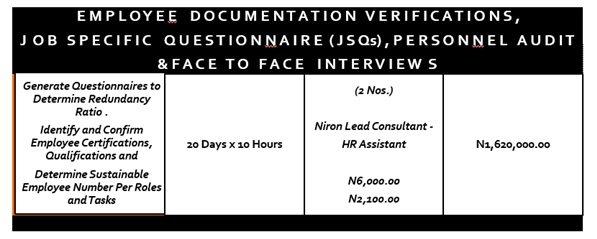


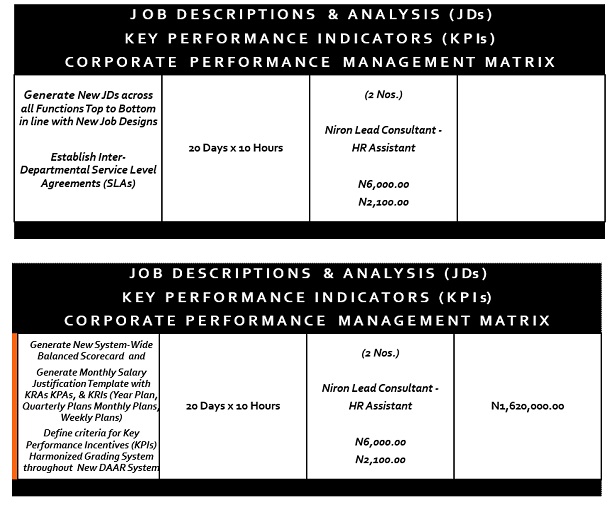
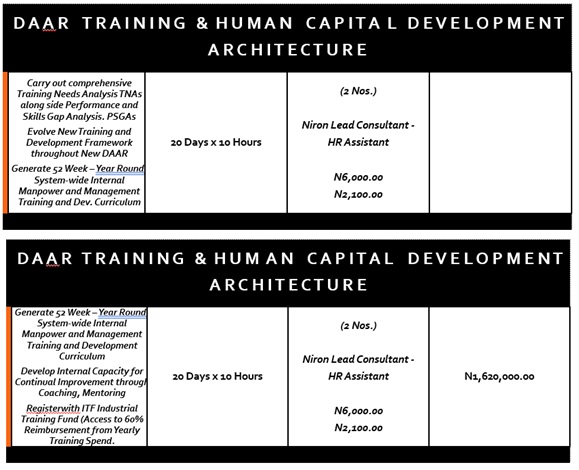
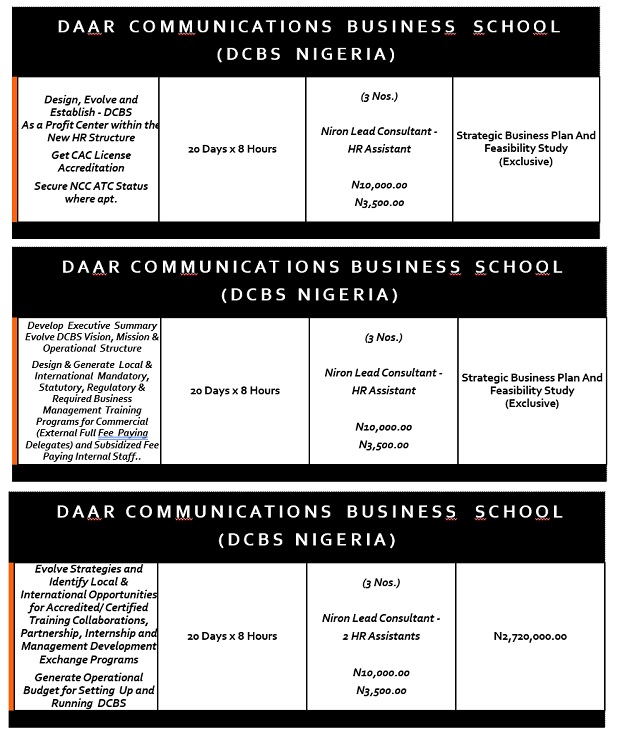
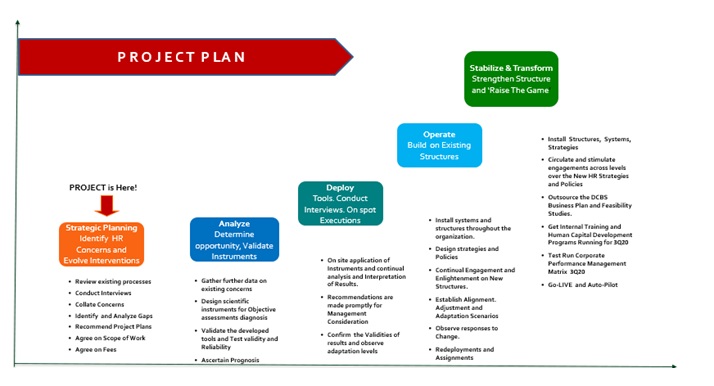
Staff Roles, Activity And Documentation Checklist 2020
Belbin Questionnaire